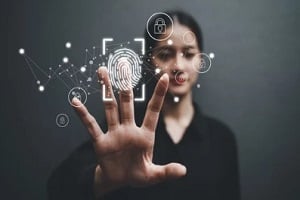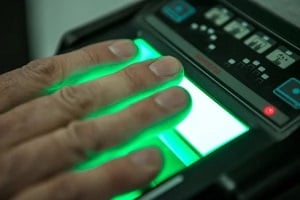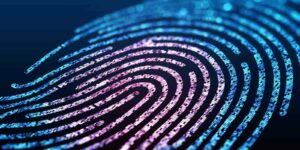Throughout history, fingerprints have been used for identification purchases. Some of the earliest uses of fingerprinting date back to 1000 BC when fingerprints were used in place of signatures on official documents in places including China, Babylon, Persia, and Nova Scotia. After many centuries, fingerprinting has evolved to live scan fingerprinting, a law enforcement software that allows authorities to scan a person’s fingerprints using an electronic scanner.
The following details more about the history of fingerprinting and the importance of having highly accurate fingerprinting technology in this day and age.
Earliest Analyzation of Fingerprints
 In 1686, a professor in Italy at the University of Bologna was one of the first people to earnestly analyze fingerprints. This professor, Marcello Malpighi, found fingerprints to have common patterns, including arches, loops, whorls, and ridges.
In 1686, a professor in Italy at the University of Bologna was one of the first people to earnestly analyze fingerprints. This professor, Marcello Malpighi, found fingerprints to have common patterns, including arches, loops, whorls, and ridges.
However, these patterns would not be confirmed until 1823 when another professor, Johannes Evengelista Purkinje, documented nine different fingerprint patterns. Despite these findings, it would still be several more decades before fingerprints were found to be a viable form of identification.
In 1858, the English began to use fingerprints more regularly. Sir William Herschel, the Chief Magistrate of the Hooghly district in Jungipoor, India, began using fingerprints on native contracts. These prints began as palm prints and later transitioned to prints of the right index and middle fingers.
By 1880, fingerprints were starting to be used for identification purposes. Dr. Henry Faulders, a Tokyo physician, became interested in fingerprinting and conducted his own experiments to prove that fingerprints could be useful. Dr. Faulders successfully matched fingerprints left on a stray bottle with a laboratory worker.
Use of Fingerprints in Criminal Investigations
Today, fingerprints being used to identify suspects in criminal investigations is a common expectation; however, fingerprinting was not always a key component in police work. It was not until 1892 that fingerprints were used to solve a crime.
In Argentina, police discovered a bloody fingerprint on a door frame and analyzed it to identify the murderer. In that same year, many police departments began to keep fingerprints on file. By 1896, law enforcement and other authorities around the world began to use fingerprints.
After moving from Argentina, the use of fingerprints spread across India and eventually to England. After seeing the success of fingerprinting in Argentina and India, Scotland Yard made the necessary steps to introduce a fingerprinting system to England and ultimately founded the Scotland Yard Fingerprint Bureau.
The use of fingerprints also became commonplace in Paris with local police departments keeping the fingerprints of criminals on file. In 1902, Paris police discovered a fingerprint at the scene of a crime and compared it with their fingerprint files to identify the murderer.
Fingerprinting Comes to the United States
By 1903, America had begun using fingerprints. Some of the first police departments to adopt this investigative tool was the New York Police Department. Soon after, other departments throughout the state started using fingerprints to identify individuals. Over the next several years, the use of fingerprints began to spread west.
The Army, Marines and Navy found fingerprints to be highly advantageous starting in 1905. At the time, the National Bureau of Criminal Investigation started to keep fingerprints on file. In 1924, the Federal Bureau of Investigation (FBI) assumed the role of cataloging fingerprints and by 1971, had collected and stored more than 200 million fingerprints.
The 1990s is when fingerprinting technology really began to skyrocket. With new advancements in technology, computerized programs were developed to organize fingerprints in a more efficient way.
 Many authorities adopted Automated Fingerprint Identification Systems (AFIF). These programs allowed law enforcement to quickly scan and store fingerprints electronically and with great accuracy.
Many authorities adopted Automated Fingerprint Identification Systems (AFIF). These programs allowed law enforcement to quickly scan and store fingerprints electronically and with great accuracy.
With child abduction concerns at an all-time high, fingerprinting children became a priority in 1996. Many law enforcement groups made an effort to fingerprint children to help increase the odds of a successful recovery if a child ever went missing or got lost. For this very purpose, Fingerprint America was founded by Christ Migilaro.
In 1999, the FBI moved away from manual fingerprinting to more efficient electronic fingerprinting. This was a long and tedious process that involved having to transfer existing fingerprint files to a computerized electronic system. However, with the creation of this system, law enforcement was better equipped to scan and store millions of fingerprints from people around the world.
Discover Life Scan Fingerprinting from CPI OpenFox
Fingerprints offer a valuable means of personal identification. While a person’s hair color and other personal characteristics can change over time, fingerprints remain permanent.
The team at CPI OpenFox understands the importance of fingerprinting in modern law enforcement practices and offers live scan fingerprinting software as a way to improve upon current processes. OpenFox live scan fingerprinting software is customized to submit fingerprints to authorities like the FBI and FINRA. To learn more, schedule a consultation with CPI OpenFox.


